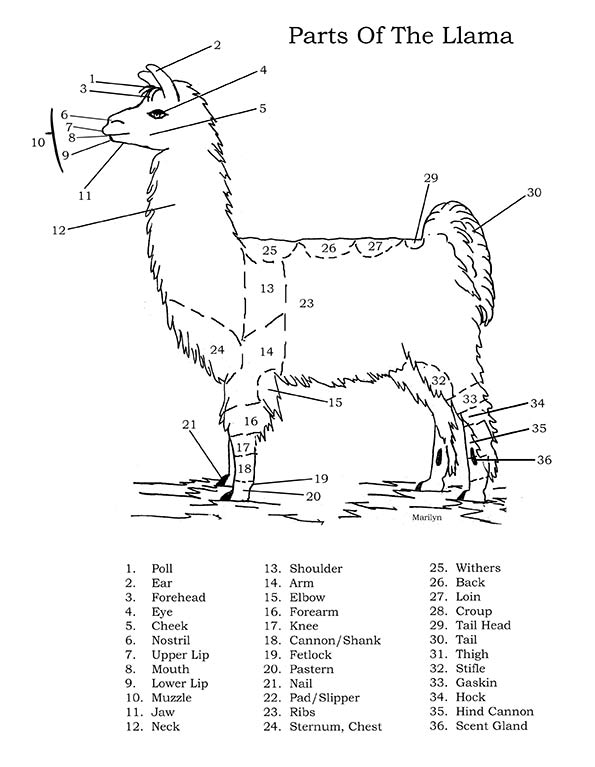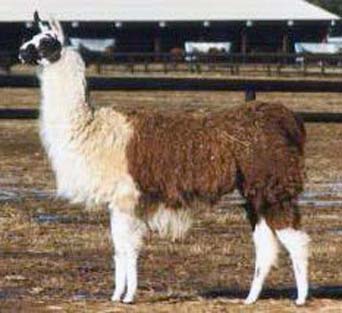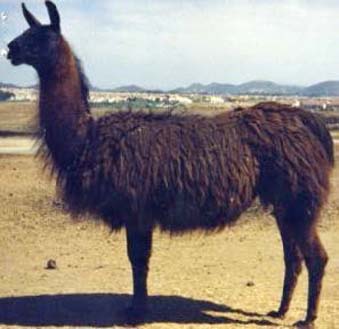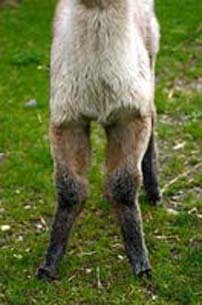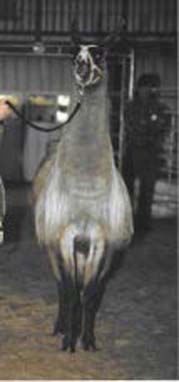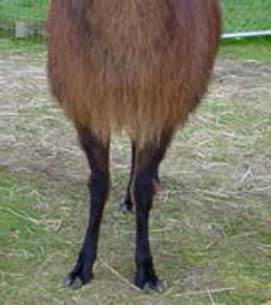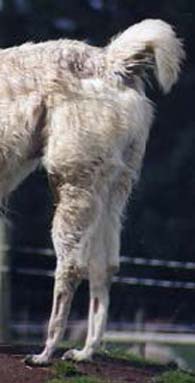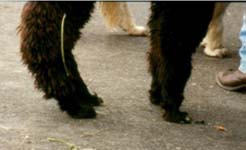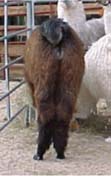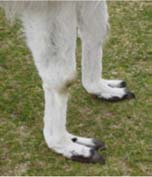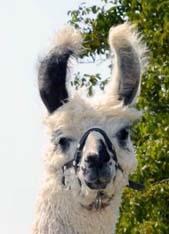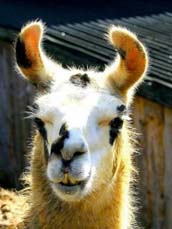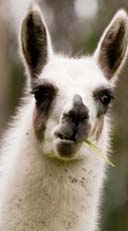Showing a Llama or Alpaca
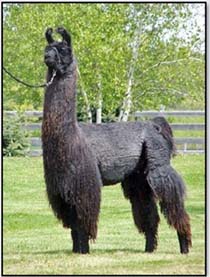
Take the Mystery Out of Llama Judging
by Darrell D. Anderson
photo credit: JNK Llamas
Webmaster Note: We graciously want to say ‘Thank You’ to Kyle Mumford, editor American Llama, and Darrell Anderson for permission to reprint this article. Whether you show llamas and alpacas, breed them, perform or pack with them, take them to public relations events, or admire them in the pastures understanding good physical confirmation is important. I suspect we will all find something of interest in the great article that can help us with overall herd management.
Have you ever been traveling home from a llama show and you ask the question, “What did that judge mean when he said the llama that placed in front of me in the halter class was more balanced?” Or, “what was she referring to when she said that the llama ahead of me in the line-up tracked more correctly both front and rear?”
Whether you’re a rookie or have been showing for decades, the more you understand about judging llamas, the more beneficial it will be to you in evaluating your own llamas at home.
One of my favorite livestock legends, Dr. Harlan Ritchie from MSU, once wrote that, “Judging instills confidence in those people who may be timid, and humbles those who tend to be conceited.” I think that is very true, but don’t let that affect your decision to learn more about judging your llamas and those you might be considering to add to your herd.
One of the unique scenarios in which we find ourselves in the llama industry is that there is not a true breed standard or end product that we all are using as our goal. But again, don’t let that discourage you from learning all you can about judging llamas. In reality, llama breeders are trying to relate “form” of the animal with the “function” for which it was intended to serve.
So let’s take a look at some of the basic areas of consideration in evaluating llamas. For ease of this article, I will categorize some of the most common traits to look for when you’re at a show or at home in your pasture.
One of the first steps in discussing llama judging is to become familiar with all of the terms for the various body parts. Once you’ve conquered that task, you will have a better understanding of the faults and traits we’ll be discussing.
General Appearance/Balance
The llama should be well balanced, symmetrical, and proportioned for its age. It also should stand on four strong legs correctly placed, and with no deviation. The length of the neck equals the length of the legs, and two-thirds the length of the back. The body parts should flow together as he/she moves across the ring. The neck should come out of the withers smoothly and not bounce when on the move. The llama should move in a very comfortable manner – if not, there is probably a structure problem that needs to be evaluated. Watch for llamas that have a clumsy gait, are weak topped, steep in their rump, or look like a committee created them. 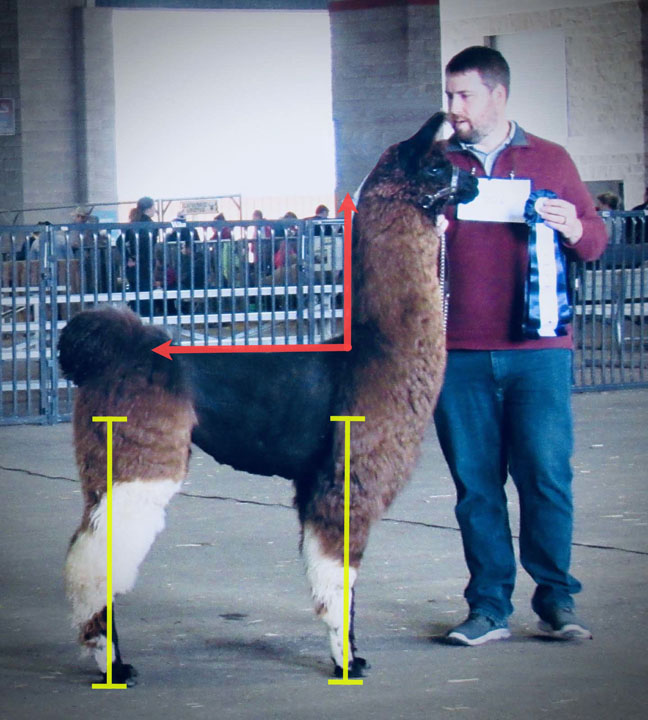
The Body
The back of the llama should be straight with a high tail set and smooth shoulder/neck juncture. The chest should have sufficient capacity for air exchange and the rib should be rounded to provide for internal capacity. You may find that some llamas are easy-keepers and might be carrying too much weight, while others may be under-conditioned.
Feet, Legs and Movement
The skeleton is the framework, and if it is designed incorrectly, it will hinder the development and function of the llama. That is why there is a lot of emphasis on correct feet and legs when judging llamas. Proper angle of the bones on either end of the llama are a big part of flexibility and fluid movement.
Here are some common problems seen in llama structure and how each one impacts movement:
Breed and Sex Character
This encompasses ear shape, design and overall style of the head. Males should look masculine and have two even sized testicles. Females should look feminine, and have a vulva that is not too infantile or tipped.
How Do I Learn More about Judging?
How do I learn more about judging? You can find some veteran breeder that would be happy to visit with you about llama evaluation. Most judges will also be glad to visit with you, when they are not in the ring judging. And of course, going to shows and watch and listen to the judges, as they place the classes and give their oral reasons is a great way to learn.
I have only scratched the surface with this article, but hopefully it will help you start to erase the “mystery” of llama judging, and help you design your breeding program. Happy Judging!!
About Darrell Anderson
Darrell and Merlene Anderson live in West Lafayette, IN. Darrell is a certified judge in the Alpaca and Llama Show Association (ALSA) and in the International Lama Registry's Show Division (ILR-SD). He has been selected to judge the national show for both organizations. In 1980 he coached the national champion 4-H livestock judging team. Darrell has recently served as the chairman of the ILR-SD judges committee. He is still a respected member of the committee and has been instrumental in helping aspiring judges become certified.
Like this article? Become a RMLA Member today!


